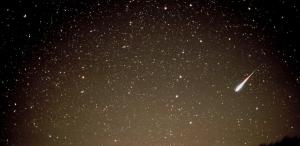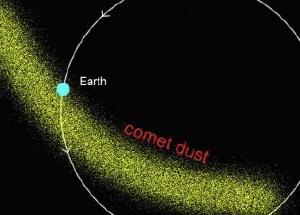Blog
Why Do We Have
Meteor Showers?
10 August 2015
 NASA Meteor Watch
NASA Meteor WatchWhile watching the night sky, you will occasionally see a meteor streak across the sky. Commonly known as shooting stars, they can be seen at any time of the year. But there are times, such as this week, when a great number of them can be seen in a night. Sometimes meteors will occur at a rate of more than 100 an hour. But why do these showers of meteors occur?
Most of the meteors we observe are due to dust particles roughly the size of a grain of sand. As these particles strike Earth’s atmosphere at great speed, the air around it is heated to the point where it ionizes and glows. The meteor itself typically burns up very quickly and never reaches the ground. There is a small amount of dust spread throughout our solar system, and this is why they can occur at any time.
 AstroBob
AstroBobMeteor showers occur when there is a concentration of dust particles striking Earth’s atmosphere. This happens when the Earth passes near the orbit of a comet. As a comet passes through the inner solar system, light and heat from the Sun causes it’s surface to vent gas and dust. This gives a comet its tail, but it also means that the comet releases a trail of dust. Much of this dust continues to orbit the Sun in much the same path as the comet itself. As the Earth passes through such a region, lots of meteors can occur in a matter of hours.
For many meteor showers, we actually know the comet that causes it. For example, the Perseid meteor shower occurring this week comes from a comet known as Swift-Tuttle, which last passed near the Sun in 1992 and won’t return until 2126. The Orionid meteor shower coming up in October has its origins from Halley’s Comet.
 Wikipedia
WikipediaSince we know that meteor showers come from comets, why don’t we name them after their comets? Meteor showers were known long before they were connected to their comets of origin, and they were identified by the region of sky from which they appear to emanate. The Perseids mostly come from a region near the constellation Perseus, hence their name. The reason meteor showers appear to come from the same region of the sky is that most of them strike Earth’s atmosphere from the same general direction (the direction of the Comet’s orbit). Because of perspective, meteors coming from the same direction appear to emanate from a single region of sky, just as parallel train tracks appear to meet at a single point on the horizon.
If you have the chance, you should definitely check out the Perseids this week. All you need is a reasonably dark and clear view of the night sky. Spend a few hours watching the stars, and you should be able to see quite a few grains of comet dust streaking across Earth’s atmosphere.